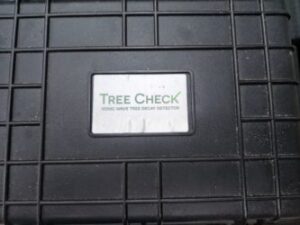Get a free estimate | (863) 619-5202 | We Offer SENIOR and MILITARY Discounts
Menu
Detecting decay in trees can be challenging because it often occurs internally, hidden from plain view. Regular inspections by trained arborists using specialized equipment can provide more accurate assessments of internal tree health and potential decay. It’s essential to address any concerns promptly to mitigate risks and preserve the health of the tree and surrounding environment. That’s why Arbor Tech Tree Care uses the latest technology to determine if your tree is rotting on the inside.

> Computerized Inspection of the Inside of Your Tree
> Visual Inspection of the Exterior of Your Tree
> Recommendations to Improve the Health of Your Tree
Call 863-619-5202 Arbor Tech Tree Care has been serving Lake Wales, Lakeland, Winter Haven and the surrounding communities for over 20 years.
Not sure if you need a tree inspection? There are some observable signs that may indicate potential decay:
Mushrooms or Fungi Growth: The presence of mushrooms or fungal conks on the trunk or base of a tree can be an indicator of decay, as fungi often thrive on decaying wood.
Cavities or Hollows: The development of large cavities or hollow areas in the trunk can suggest internal decay. If the tree’s structure is compromised, it may be more susceptible to breakage or collapse.
Cracks and Cankers: Longitudinal or horizontal cracks in the bark, as well as areas with sunken or dead bark (cankers), may signify internal decay.
Changes in Foliage: A sudden decline in the health of the canopy, such as wilting, yellowing, or premature leaf drop, could be an indication of underlying issues, including decay.
Woodpecker Activity: Woodpeckers are known to forage on trees with insect infestations or decay. If there is an increased presence of woodpecker activity, it may suggest that the tree has structural issues.
Soft or Crumbly Wood: When probing the tree with a screwdriver or similar tool, if the wood feels soft, spongy, or crumbles easily, it may be a sign of internal decay.
Insect Infestations: Certain insects are attracted to decaying wood. The presence of excessive wood-boring insects, such as carpenter ants or beetles, may indicate internal decay.
Leaning or Unstable Structure: A tree that suddenly leans or displays an unstable structure may be compromised internally. This can be particularly dangerous, as the risk of falling increases.
